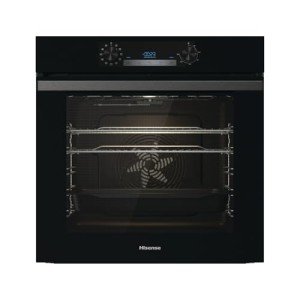What NOT To Do In The Oven Built In Industry

The Rise of Built-In Ovens: A Seamless Approach to Modern Cooking
In contemporary kitchen areas, where style aesthetic appeals blend effortlessly with functionality, one appliance stands apart as a real video game changer: the built-in oven. As house owners and chefs alike continue to seek innovative options that enhance their cooking experience, built-in ovens have actually ended up being progressively popular. This short article checks out the advantages, considerations, and trends surrounding built-in ovens, highlighting why they are a necessary function in modern-day cooking areas.
What is a Built-In Oven?
A built-in oven is a cooking area device developed to be integrated into the cabinetry of a kitchen area instead of standing alone. Unlike traditional freestanding ovens, which can be moved and placed anywhere, built-in ovens come in various designs and sizes to fit specifically within designated areas. Offered in single or double configurations, these ovens provide a streamlined appearance that matches modern kitchen area designs.
Advantages of Built-In Ovens
1. Space-Saving Design
Among the most appealing benefits of built-in ovens is their space-saving design. By incorporating the oven into cabinets, you can maximize important counter and flooring area. This is especially beneficial in smaller kitchen areas, where making the most of space is vital. Built-in ovens can be set up at eye level, making them more accessible and minimizing the requirement to bend down.
2. Visual Appeal
Built-in ovens add to a sleek and cohesive kitchen area design. Offered in different surfaces-- such as stainless steel, black, white, and custom-made cabinetry-- they can blend seamlessly into the total design. This aesthetic appeal improves the kitchen's visual consistency and elevates the space, creating a modern and advanced environment.
3. Improved Functionality
Lots of built-in ovens come equipped with sophisticated cooking technologies, such as convection cooking, steam ovens, and smart features. These improvements enable versatile cooking choices, making it easier to accomplish professional-level results in the house. Smart built-in ovens can even connect to Wi-Fi, allowing users to control the oven from another location, get notifications, and access a variety of cooking programs and recipes.
4. Enhanced Ventilation
Since built-in ovens can be integrated with kitchen area hoods and ventilation systems, they can help maintain much better air quality and decrease cooking odors. This is especially substantial for those who like to prepare with aromatic spices and ingredients, as a reliable ventilation system can keep the kitchen comfy and inviting.
5. Personalization Options
Built-in ovens use a wide variety of customization alternatives to fit individual cooking designs and requirements. From professional-grade appliances with numerous cooking modes to compact styles for smaller cooking areas, property owners can select the oven that fits their specific requirements. Numerous producers also use adjustable front panels, enabling you to match the oven's appearance to your kitchen cabinetry for a genuinely merged appearance.

Factors to consider When Choosing a Built-In Oven
While built-in ovens have numerous advantages, there are essential factors to consider to bear in mind before purchasing:
1. in built oven -in ovens typically include a greater price than their freestanding equivalents due to their design and setup requirements. It's essential to element in both the cost of the oven and any additional expenditures connected to kitchen cabinetry modifications or installation.
2. Installation Requirements
Setting up a built-in oven often requires professional help, especially if you need to modify existing kitchen cabinetry. Ensure that you consider any costs associated with setup, consisting of labor and possible kitchen cabinetry changes.
3. Size and Dimensions
Before purchasing a built-in oven, determine the designated space properly to ensure an appropriate fit. Built-in ovens been available in various sizes and setups, so picking one that lines up with your needs and kitchen design is essential.
4. ovens built in and Usage
Consider your cooking routines and needs when picking a built-in oven. If you frequently host big gatherings, a double oven might be more advantageous. On the other hand, if you have a compact kitchen area, a single-wall oven might be sufficient.
Trends in Built-In Ovens
The cooking area device market is constantly progressing, and built-in ovens are not exempt from emerging patterns. Some present trends include:
Smart Technology Integration: With the rise of clever home innovation, built-in ovens now often include connectivity choices. This enables users to keep an eye on cooking progress and change settings through mobile apps.
Energy Efficiency: As sustainability becomes a concern, numerous makers are buying energy-efficient built-in ovens that reduce energy usage while maintaining efficiency.
Multi-functional Designs: Built-in ovens now offer functions such as air frying, slow cooking, and steaming, supplying versatility that meets a large range of cooking methods.
Conclusion
Built-in ovens undoubtedly represent a best mix of design, function, and convenience in today's kitchen areas. As more homeowners opt for this contemporary solution, the focus moves to producing a cooking space that is as visually pleasing as it is useful. Whether you are developing a brand-new home or renovating your kitchen, thinking about a built-in oven might raise your culinary experience and transform your cooking area into a trendy and practical haven. With an array of choices offered and ongoing innovations in technology, built-in ovens remain a standout option for both beginner cooks and cooking lovers alike.
